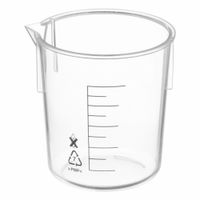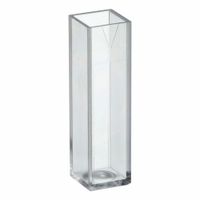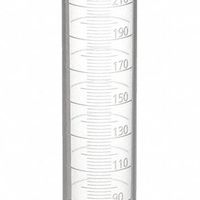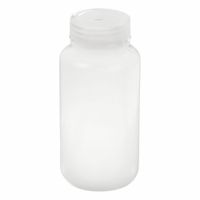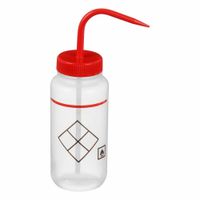Call +(254) 703 030 000 / 751 483 999 / 721 704 777
- Home
- Lab Supplies
- Plastic Glass Containers Closures
- Plastic Lab Containers
.....Read More
Frequently Asked Questions
What are the advantages of using plastic lab containers over glass?
Plastic lab containers offer several advantages over glass:
1. **Durability**: Plastic containers are less prone to breakage compared to glass, reducing the risk of accidents and injuries in the lab. This makes them ideal for environments where safety is a priority.
2. **Lightweight**: Plastic is significantly lighter than glass, making it easier to handle, transport, and store. This is particularly beneficial in large-scale operations or when frequent movement of containers is required.
3. **Cost-Effectiveness**: Generally, plastic containers are more affordable than glass ones. Their lower cost makes them a practical choice for labs with budget constraints or those requiring large quantities of containers.
4. **Chemical Resistance**: Many plastics are resistant to a wide range of chemicals, including acids and bases, which can be advantageous depending on the specific type of plastic used. This resistance can prevent contamination and degradation of the container.
5. **Versatility**: Plastic containers come in various shapes, sizes, and types, such as polypropylene, polyethylene, and polystyrene, each offering different properties suitable for specific applications.
6. **Flexibility**: Some plastics offer flexibility, which can be useful in applications requiring squeezing or bending of the container without breaking.
7. **Thermal Insulation**: Plastic provides better thermal insulation than glass, which can be beneficial in maintaining the temperature of the contents.
8. **Non-Reactive**: Certain plastics are non-reactive, making them suitable for storing sensitive or reactive substances without risk of interaction.
9. **Customization**: Plastic containers can be easily customized with features like graduations, handles, or spouts, enhancing their functionality for specific lab tasks.
10. **Recyclability**: Many plastic containers are recyclable, contributing to sustainability efforts when disposed of properly.
These advantages make plastic lab containers a practical choice for many laboratory settings, balancing safety, cost, and functionality.
How do you prevent chemical leaching in plastic lab containers?
To prevent chemical leaching in plastic lab containers, consider the following strategies:
1. **Material Selection**: Use high-quality, chemically resistant plastics such as PTFE (Teflon), PFA, or HDPE, which are less prone to leaching.
2. **Compatibility Check**: Ensure the plastic material is compatible with the chemicals being stored. Consult chemical compatibility charts to avoid reactions that may cause leaching.
3. **Temperature Control**: Store chemicals at recommended temperatures. Avoid exposing plastic containers to high temperatures, which can increase the rate of leaching.
4. **Time Limitation**: Minimize the duration of chemical storage in plastic containers. Use glass or other inert materials for long-term storage.
5. **pH Consideration**: Be cautious with highly acidic or basic substances, as they can accelerate leaching. Use alternative materials if necessary.
6. **Avoid Physical Stress**: Prevent scratches, cracks, or other physical damage to containers, as these can increase leaching potential.
7. **Regular Inspection**: Routinely inspect containers for signs of wear or degradation and replace them as needed.
8. **Proper Cleaning**: Clean containers thoroughly with appropriate solvents and methods to remove residues that might contribute to leaching.
9. **Use of Additives**: Some plastics contain additives to enhance stability. Ensure these additives do not interact negatively with stored chemicals.
10. **Regulatory Compliance**: Follow industry standards and guidelines for the use of plastic containers in laboratory settings to ensure safety and compliance.
By implementing these strategies, the risk of chemical leaching in plastic lab containers can be significantly reduced, ensuring the integrity of stored substances and the safety of laboratory operations.
What types of plastic lab containers are best for storing liquids?
The best types of plastic lab containers for storing liquids are those made from materials that offer chemical resistance, durability, and safety. Here are some commonly used types:
1. **Polypropylene (PP):** Known for its excellent chemical resistance, polypropylene is suitable for storing a wide range of liquids, including acids and bases. It is autoclavable, making it ideal for sterilization, and is also resistant to cracking and stress.
2. **Polyethylene (PE):** Available in high-density (HDPE) and low-density (LDPE) forms, polyethylene is versatile and resistant to many chemicals. HDPE is more rigid and suitable for larger containers, while LDPE is more flexible and used for squeeze bottles.
3. **Polycarbonate (PC):** This material is known for its clarity and toughness. It is suitable for applications requiring visibility of the liquid level. However, it is less resistant to certain chemicals compared to PP and PE.
4. **Polytetrafluoroethylene (PTFE):** Known for its exceptional chemical resistance and non-reactivity, PTFE is ideal for storing highly corrosive or reactive liquids. It is also resistant to high temperatures.
5. **Polyvinyl Chloride (PVC):** PVC offers good chemical resistance and is often used for storing aqueous solutions. It is less suitable for organic solvents.
6. **Fluorinated Ethylene Propylene (FEP):** Similar to PTFE, FEP offers excellent chemical resistance and is transparent, allowing for easy monitoring of liquid levels.
When selecting a container, consider the chemical compatibility of the plastic with the liquid to be stored, the required temperature range, and whether sterilization is necessary. Additionally, ensure that the container has a secure sealing mechanism to prevent leaks and contamination.
How do you clean and maintain plastic lab containers?
To clean and maintain plastic lab containers, follow these steps:
1. **Pre-Rinse**: Immediately after use, rinse the containers with warm water to remove any residues. This prevents substances from drying and becoming difficult to remove.
2. **Detergent Wash**: Use a mild, non-abrasive detergent mixed with warm water. Avoid harsh chemicals that can degrade plastic. Scrub gently with a soft brush or sponge to avoid scratching the surface.
3. **Rinse Thoroughly**: Rinse the containers multiple times with distilled or deionized water to remove all traces of detergent. This is crucial to prevent contamination in future experiments.
4. **Disinfect**: If necessary, disinfect the containers using a diluted bleach solution (typically 10% bleach) or an appropriate lab disinfectant. Ensure compatibility with the plastic type to avoid damage.
5. **Final Rinse**: Perform a final rinse with distilled or deionized water to remove any disinfectant residues.
6. **Drying**: Air-dry the containers on a clean, lint-free surface. Avoid using towels that may leave fibers or contaminants.
7. **Inspection**: Regularly inspect containers for cracks, scratches, or discoloration, which can indicate degradation. Replace any damaged containers to maintain lab safety and integrity.
8. **Storage**: Store containers in a clean, dry area away from direct sunlight and extreme temperatures to prevent warping or degradation.
9. **Labeling**: Clearly label containers with their contents and cleaning date to ensure proper usage and maintenance.
10. **Regular Maintenance**: Establish a routine cleaning schedule based on usage frequency and the nature of substances handled. Regular maintenance prolongs the lifespan of the containers and ensures consistent experimental results.
What are the differences between bottles, jars, and flasks in lab settings?
Bottles, jars, and flasks are common laboratory containers, each with distinct features and uses:
1. **Bottles**:
- **Design**: Typically cylindrical with a narrow neck and a wider body. They often have screw caps or stoppers.
- **Material**: Made from glass or plastic, depending on the chemical compatibility required.
- **Use**: Ideal for storing and transporting liquids. The narrow neck minimizes spillage and evaporation.
- **Types**: Reagent bottles, wash bottles, and media bottles are common types.
2. **Jars**:
- **Design**: Generally have a wide mouth and a cylindrical shape. They may come with screw caps or snap-on lids.
- **Material**: Usually glass or plastic, chosen based on the substance stored.
- **Use**: Suitable for storing solids, powders, or viscous liquids. The wide mouth allows easy access for scooping or pouring.
- **Types**: Specimen jars and storage jars are typical examples.
3. **Flasks**:
- **Design**: Characterized by a narrow neck and a bulbous body, which can be conical (Erlenmeyer flask) or round (round-bottom flask).
- **Material**: Primarily glass, often borosilicate for heat resistance.
- **Use**: Used for mixing, heating, and chemical reactions. The narrow neck reduces evaporation and splashing.
- **Types**: Erlenmeyer flasks, volumetric flasks, and Florence flasks are common varieties.
In summary, bottles are best for liquid storage, jars for solids and easy access, and flasks for reactions and heating. Each is chosen based on the specific laboratory need, considering factors like material, design, and intended use.
How do you choose the right plastic lab container for specific samples?
To choose the right plastic lab container for specific samples, consider the following factors:
1. **Chemical Compatibility**: Ensure the container material is compatible with the sample's chemical properties. For instance, use polypropylene for acids and bases, and polyethylene for organic solvents.
2. **Temperature Resistance**: Select containers that can withstand the sample's storage and processing temperatures. Polycarbonate is suitable for low temperatures, while polypropylene can handle moderate heat.
3. **Sample Volume**: Choose a container size that accommodates the sample volume with some extra space to prevent spillage and allow for expansion.
4. **Sterility**: For biological samples, opt for pre-sterilized containers to prevent contamination. Polystyrene and polypropylene are commonly used for sterile applications.
5. **Transparency**: If visual inspection is necessary, use clear containers like polystyrene or polycarbonate. For light-sensitive samples, use opaque or amber-colored containers.
6. **Closure Type**: Ensure the container has a secure closure to prevent leaks and contamination. Screw caps or snap-on lids are common options.
7. **Regulatory Compliance**: Verify that the container meets relevant regulatory standards, such as FDA or USP, especially for pharmaceutical or food-related samples.
8. **Reusability and Disposal**: Consider whether the container needs to be reusable or disposable. Polypropylene and polyethylene are often used for disposable containers due to their cost-effectiveness.
9. **Mechanical Strength**: For samples requiring robust handling, choose containers made from durable plastics like polycarbonate.
10. **Cost**: Balance the container's features with budget constraints, ensuring it meets the necessary requirements without unnecessary expense.
By evaluating these factors, you can select the most appropriate plastic lab container for your specific sample needs.
Are plastic lab containers safe for storing all types of chemicals?
Plastic lab containers are not universally safe for storing all types of chemicals. The safety and suitability of plastic containers depend on the chemical compatibility of the plastic material with the specific chemical being stored. Different plastics have varying resistance to chemical reactions, and using the wrong type can lead to container degradation, chemical contamination, or hazardous reactions.
Common plastics used in lab containers include polyethylene (PE), polypropylene (PP), polyvinyl chloride (PVC), and polytetrafluoroethylene (PTFE). Each has distinct properties:
1. **Polyethylene (PE):** Generally resistant to acids, bases, and alcohols, but not suitable for strong oxidizing agents or hydrocarbons.
2. **Polypropylene (PP):** Similar to PE but with higher temperature resistance. It is suitable for many acids and bases but not for strong oxidizers or aromatic hydrocarbons.
3. **Polyvinyl Chloride (PVC):** Resistant to many acids and bases but can degrade with strong solvents and high temperatures.
4. **Polytetrafluoroethylene (PTFE):** Highly resistant to most chemicals, including strong acids, bases, and solvents, making it suitable for a wide range of applications.
Some chemicals, such as strong acids (e.g., nitric acid), strong bases (e.g., sodium hydroxide), and organic solvents (e.g., acetone, benzene), can react with or permeate certain plastics, leading to container failure or contamination. Additionally, temperature and pressure conditions can affect the chemical resistance of plastics.
For safe storage, it is crucial to consult chemical compatibility charts and material safety data sheets (MSDS) to ensure the chosen plastic is appropriate for the specific chemical. In cases of uncertainty or when dealing with highly reactive or hazardous chemicals, using glass or specialized containers may be necessary to ensure safety and integrity.
